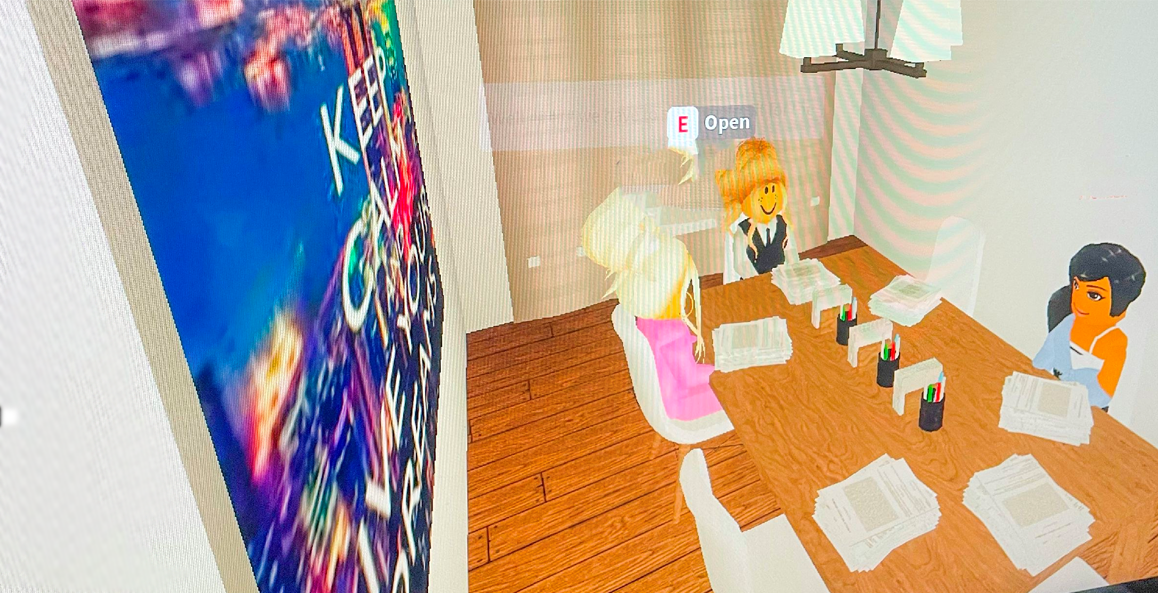Ever used Roblox For interviews?
Ever used Roblox to interview candidates? My 10-year-old daughter just ran a recruitment process on Bloxburg and it got me thinking!
Wellmeadow supports ambitious companies with business growth enabled by HubSpot.
We've worked with over 100+ businesses at board-level across sectors such as automotive, manufacturing, healthcare, legal, SaaS, and professional services.

%20(A4).png?width=71&height=100&name=portrait%206-box%20model%20diagram%20(1170%20x%207051%20px)%20(A4).png)

-1.png?width=70&height=70&name=Square%20(1)-1.png)
3 min read
Richard Buckle : Feb 8, 2021 11:35:32 AM

The purpose of this part of the selection phase is to achieve a list of approximately four candidates to invite to an evaluation interview.
This is the penultimate blog in the series of extracts from our downloadable e-book "Is it time to recruit well?".
Online software is a vital tool for this stage. Before this, you’ll have narrowed down the field of candidates to a long list, and the remaining ten or so candidates will be invited to an online video conferencing interview, typically on Zoom or Teams.
Before holding the interviews, take some time to review the questions you are going to ask the candidates. Where possible, these questions should be standardised to allow a fair comparison.
Additionally, think through the purpose of each question. Some questions may be required to clarify or verify information that has previously been provided by the candidate in either a CV or the online questionnaire. Other’s may be asked to assess a candidates knowledge. As this is the first time you’ll meet the candidate face-to-face (albeit digitally), it’s a great opportunity to start testing for desired behaviours. Asking some behavioural questions allows you to start assessing reactions and responses, and referring to the role diagnostic and person specification can be helpful.
You can read our blog on the importance of person specification in your recruitment process here.
Ask questions such as “can you give me an example of when you had to take responsibility for a mistake?” . Consider the following:
Finally, consider how each question will be scored ahead of time.
A typical online face-to-face interview should take approximately 30-40 minutes to give enough time to check all the information required, as well as expand on new areas to assess a candidate’s fit for the role. Some key parts of the interview include:
ScoringA pre-prepared scoring matrix can be useful to help manage the recording of scores whilst maintaining conversation. If the software you are using allows it, record the call so that it can be referred to later. Inform the candidate of this well ahead of the interview to ensure all appropriate permissions are in place.
Rapport building and environment
When holding the online interview, other factors can be evaluated such as general rapport building skills. It can also be interesting to see the environment in which candidates undertake the interview as it gives some degree of insight into their personal life (a Star Wars bobble head figure can make for an interesting conversation point!). Additionally, has the candidate dressed appropriately for the interview or company culture?
Reverse the interviewIn a recent recruitment role we undertook, we did a reverse online face-to-face interview- essentially asking each candidate to interview us. While this was partially due to a journalistic requirement of the role, it also revealed some interesting insights into the priorities of the candidates. It also gave a more natural approach to discovering a candidate’s character, as well as indicating types of behaviour we could expect.
Depending on the technology used, it may be possible to get a transcript of the online interview. For example, Zoom will integrate with an online transcription service called Otter.ai which can automatically convert a video call into a transcript.
This can be useful for checking for keywords or phrases that can sometimes be missed when a conversation is in mid-flow.
By having the online face-to-face interviews recorded, it allows other members of the recruiting team the ability to see and hear candidates in an interview setting.
While technology is an important part of the recruitment process, human intuition and experience still play pivotal roles.
It can also be helpful to constructively challenge the scores given to each candidate by the interviewer as part of this exercise. This helps to reduce bias, and allows other perspectives to be heard before a final decision is made.
The objective then is to invite the top four candidates to the evaluation interviews.
No one likes rejection, but doing so constructively will humanise the recruitment process as well as strengthening your employer branding. At this stage, due to the level of rapport built, detailed candidate via phone should be offered.
In our experience, 20%-40% of rejected candidates take up this offer and, as such, is not a significant drain on resources or time. But offering this helps position the organisation as people-focussed, increasing positive employer branding and reputation.
The aim of this phase is clear, to design a fair yet effective method to find a suitable short-list of candidates to progress to evaluation interviews. Technology such as online software is an important tool to increase efficiency in this process, as well as helping to reduce bias.
But regardless of technology used, the critical element of this part of the recruitment process is to have carefully thought through what is being tested well before the selection happens; creating a robust yet consistent process.
The last blog of series takes you through the final stage of your interview process, the evaluation interviews.
Our FREE eBook 'Is It Time To Recruit Well?' is packed with information on how to recruit the right person for your organisation. Download your copy below.

Ever used Roblox to interview candidates? My 10-year-old daughter just ran a recruitment process on Bloxburg and it got me thinking!

Diversity, equality and inclusivity (DEI) has become a big area of focus for HR professionals and managers in recent years. High-profile movements...

Motivate your employees so you can reduce disengagement and increase the quality of your output.